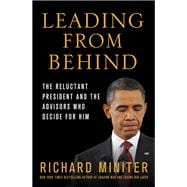
What is included with this book?
RICHARD MINITER is the author of two top-ten New York Times bestsellers, Losing Bin Laden and Shadow War, as well as Mastermind, the first biography of 9/11 planner Khalid Shaikh Mohammed. He writes a column for Forbes.com. A former editorial writer for The Wall Street Journal in Brussels, member of the investigative team at The Sunday Times in London, and editorial-page editor of the Washington Times, Miniter has also written for The New York Times, The Washington Post, The Wall Street Journal, as well as The Atlantic, Reader’s Digest, Newsweek, The New Republic, and National Review. He has appeared on CNN, C-SPAN, Fox News Channel, and MSNBC. He has won awards from the National Press Club and the International Consortium of Investigative Journalists (shared). He lives in Arlington, Virginia.
The New copy of this book will include any supplemental materials advertised. Please check the title of the book to determine if it should include any access cards, study guides, lab manuals, CDs, etc.
The Used, Rental and eBook copies of this book are not guaranteed to include any supplemental materials. Typically, only the book itself is included. This is true even if the title states it includes any access cards, study guides, lab manuals, CDs, etc.